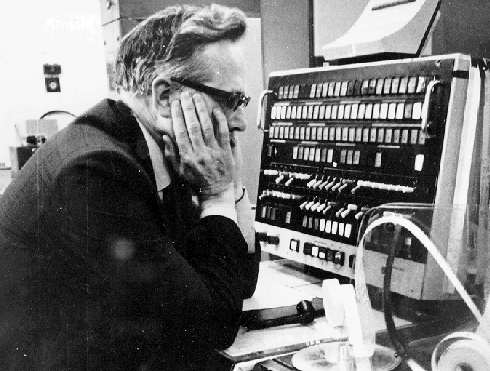

Tom Kilburn was a member of the Atlas Computer Committee from 1961 to 1975, the whole time it was in existence.
He was born in Dewsbury, Yorkshire in August 1921 and attended Wheelwright Grammar School, Dewsbury and Sidney Sussex College, Cambridge, where he studied Mathematics. He completed his studies in June 1942 and was sent to the Telecommunications Research Establishment (TRE) after a short City and Guilds course in electronics. There he joined the group led by F C Williams. They concentrated on troubleshooting problems in radar and other electronic circuitry.

In December 1946, F C Williams moved to Manchester to take up a chair at The University of Manchester, and he invited Tom to join him. Initially Tom was on secondment from TRE and it was in a landmark report written in December 1947 for TRE that he described precisely how a Cathode Ray Tube (CRT) could be used to provide digital storage for use in computing. In the early months of 1948 he concentrated on building a computer that would prove the effectiveness of the CRT storage mechanism. That computer, known as the Small Scale Experimental Machine or Baby, worked successfully for the first time on June 21st 1948. This was the first electronic stored-program computer.
In 1956 Tom Kilburn and his team started to design a machine with transistors and magnetic core store that would be much faster than the earlier machines. It was called MUSE (for microSEcond) and was designed to execute 1 million instructions a second. With such a large and fast machine, it would no longer be possible to run programs in series. Too much time would be wasted in carrying out transfers between memory and peripherals (drum and I/O).
This led to the design of the Supervisor, a large program permanently residing in the computer to organise the running of all the other programs. In early 1959 Ferranti agreed to back the project, to provide extra manpower and help in building it. The machine was rechristened Atlas. Work on the Supervisor was led by David Howarth of Ferranti, and on Compilers by Tony Brooker, who designed both a new user programming language (Atlas Autocode) and a language for writing compilers in (the Compiler Compiler).
Some novel features of Atlas were:
Tom Kilburn died in 2001.